Recently I’ve made two camping trips largely in pursuit of Sage Grouse. The first was a boom and the latter a huge bust.
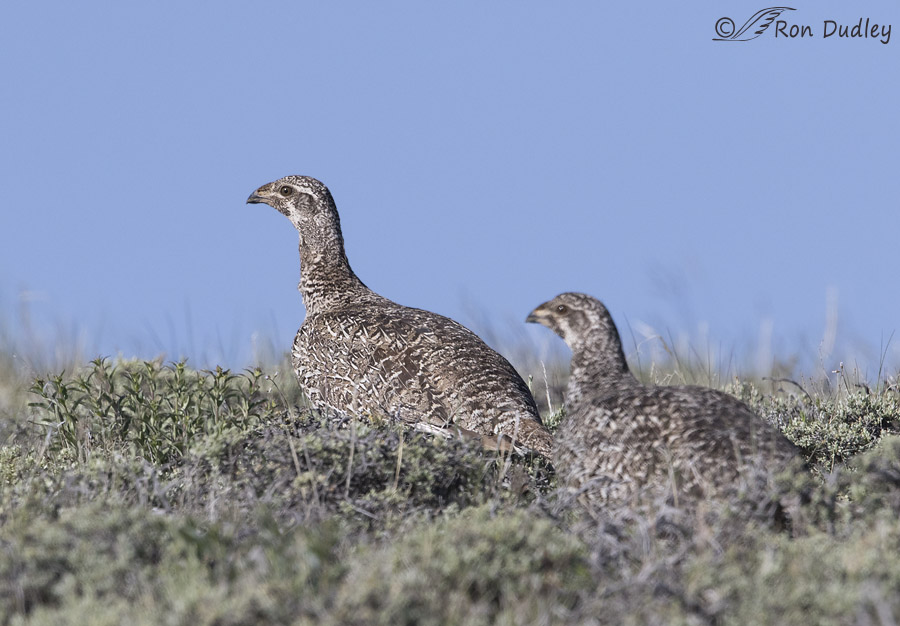
1/1250, f/13, ISO 800, Canon 7D Mark II, Canon EF500mm f/4L IS II USM +1.4 tc, not baited, set up or called in
Both trips were to the Aquarius Plateau of south-central Utah. The most recent one was virtually grouse-less. Two days of searching for them yielded very few birds and only one mediocre opportunity at photographing them, when these two birds and several others walked away from the road, crested a hill and then disappeared over the other side.
What a contrast to my previous trip to the same area two months before!
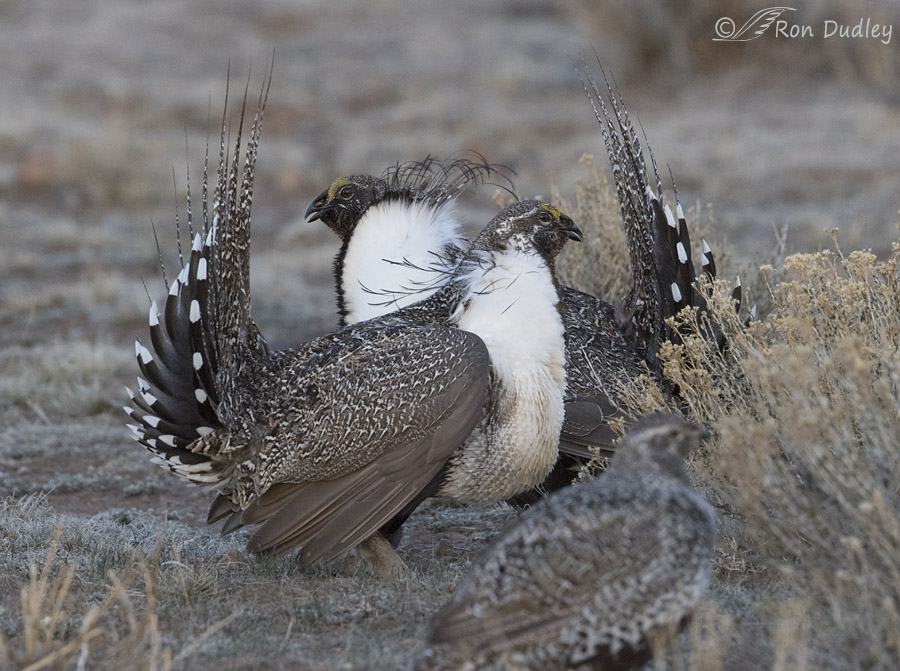
1/250, f/9, ISO 2000, Canon 7D Mark II, Canon EF500mm f/4L IS II USM +1.4 tc, not baited, set up or called in
On that trip in early March I thought I was going to wear out my relatively new camera on Greater Sage Grouse! We found two active leks with many male grouse displaying and fighting. This image is a typical scene with two testosterone-fueled males squaring off in front of an aloof female who will watch them perform and fight before eventually choosing the most impressive male as a mating partner.
Note: Most of these images were taken in low to extremely low light so I was forced to choose very high ISO settings that resulted in some noticeable graininess (noise). With grouse on a lek (the action begins long before sunrise and ends soon after) the photographer is often forced to choose between noisy images, blurry subjects or no images at all.
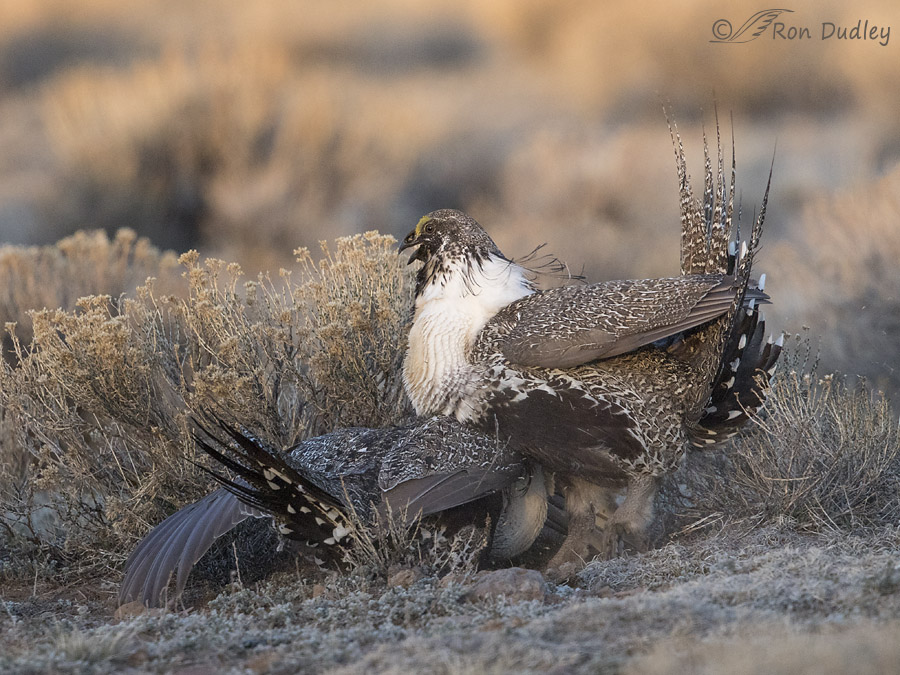
1/800, f/5.6, ISO 2000, Canon 7D Mark II, Canon EF500mm f/4L IS II USM +1.4 tc, not baited, set up or called in
The fights between males were ferocious. This bird held its rival down for some time before it could get up again and resume the conflict.
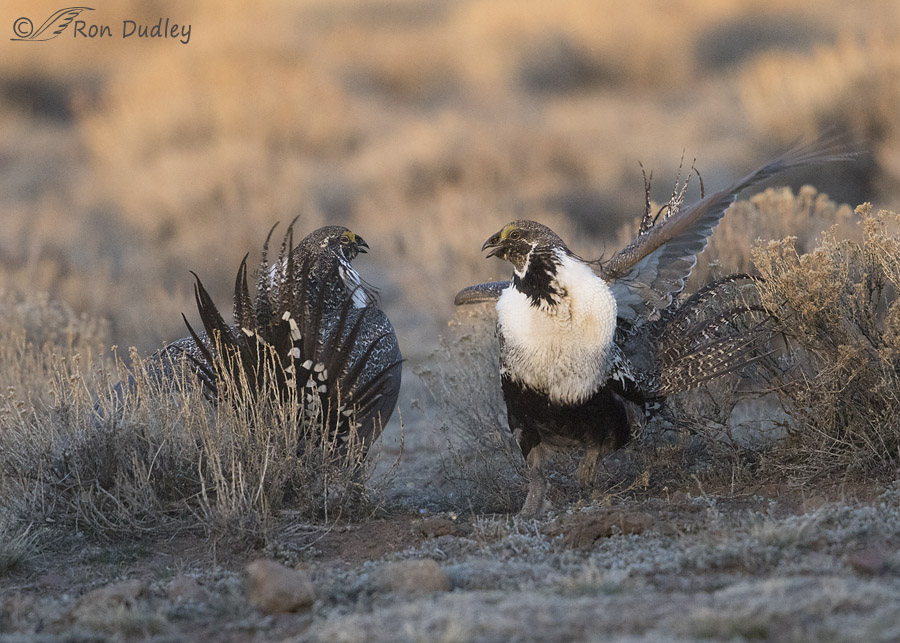
1/1600, f/5.6, ISO 4000, Canon 7D Mark II, Canon EF500mm f/4L IS II USM +1.4 tc, not baited, set up or called in
The birds would square off and attempt to intimidate each other. If that didn’t work (it never seemed to)…
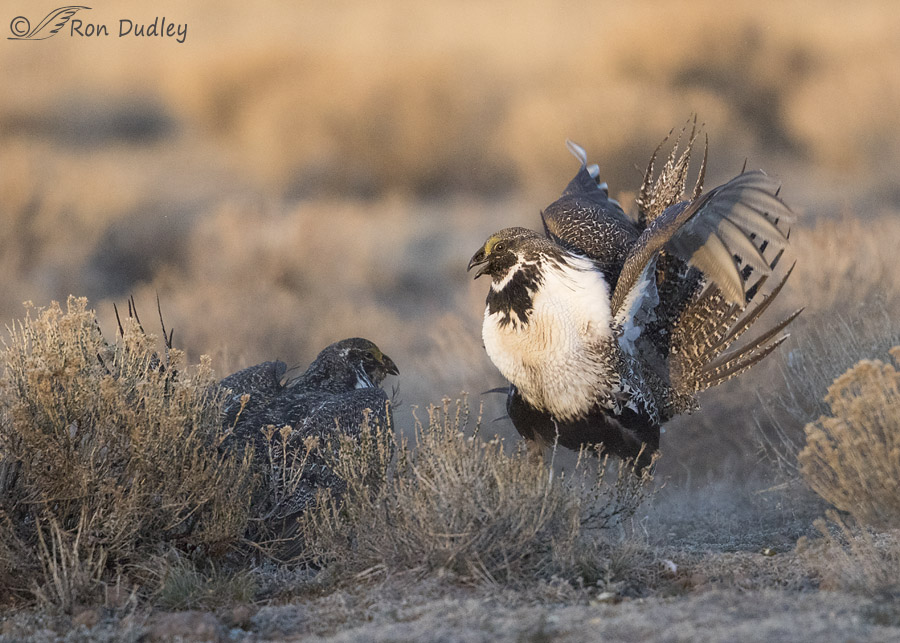
1/2000, f/5.6, ISO 4000, Canon 7D Mark II, Canon EF500mm f/4L IS II USM +1.4 tc, not baited, set up or called in
the biting, clawing and wing-slapping would commence. In this low light I had to visit ISO territory that none of my cameras had ever seen in order to get enough shutter speed to freeze the action.
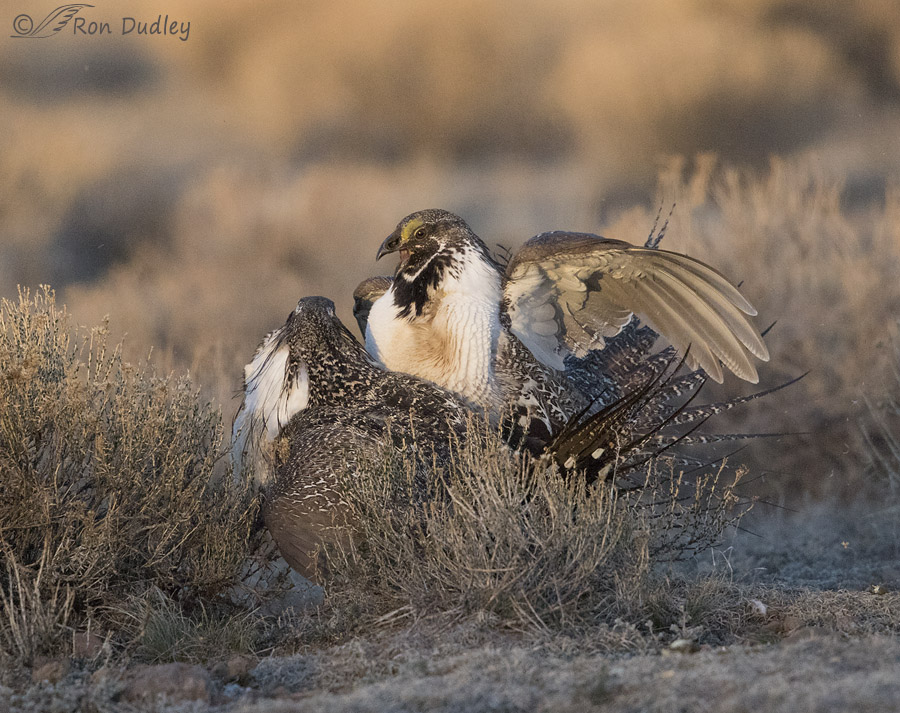
1/2500, f/5.6, ISO 4000, Canon 7D Mark II, Canon EF500mm f/4L IS II USM +1.4 tc, not baited, set up or called in
The males seldom peck each other with their beaks though they do attempt to grab other males with their bills and drag them. But their weapon of choice is their wings so researchers call these conflicts “wing fights”.
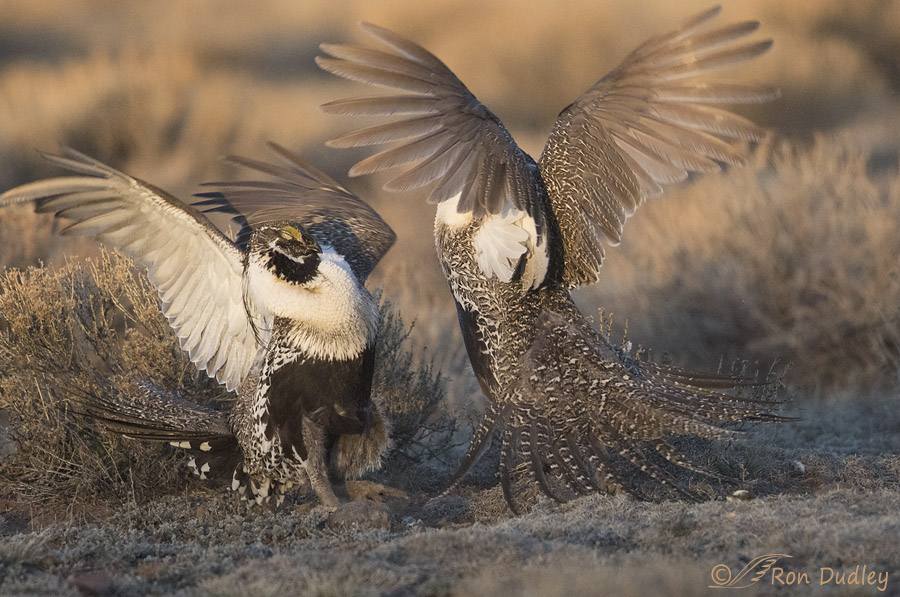
1/2000, f/5.6, ISO 4000, Canon 7D Mark II, Canon EF500mm f/4L IS II USM +1.4 tc, not baited, set up or called in
I could clearly hear the sounds of the slapping wings. For obvious reasons their eyes were often closed when my shutter clicked.
Not long after sunrise the action began to taper off. Sometimes individual birds flew or wandered off and other times they did so in groups. I was so very cold that I actually left the lek with a few birds still in the general vicinity so I could warm up.
For me that’s unheard of…
Ron
Note: Speaking of “trips”, another one begins for me later this morning and this time I’m heading north. As per usual on these camping treks internet access will be spotty at best but I’ll attempt to post from the (primitive dirt) road. I’ll likely be unable to respond to many comments but you can rest assured that I’ll be reading them on my phone if you should choose to make them. How long I’ll be gone depends on the weather, the birds and a cantankerous tooth that has been giving me grief.


We all have days when we can’t find the birds we’re looking for and other days we just can’t seem to get a decent shot. Your shots are spectacular. Thanks for sharing!
Charlotte
Murphy’s Law says that your tooth will be fine, UNLESS you see wonderful, never before seen birds or bird behaviour. I really hope that Murphy is busy stuffing up someone else’s day and that you have a wonderful, amazing, incredible trip.
Oh, oh, oh – another terrific series of photos, Ron!! I enjoyed them even more from watching the Sagebrush Sea. I loved hearing the sounds they make when their chest is expanded & they slab the two bulging areas of their chest together – awesome. I truly enjoyed the fight photos since you can really study the “action”. I absolutely love these feisty birds. What amazed me from the show was how many of the males never get a chance to breed because the females seem to all go for just a few of the males who come to the lek. Just fascinating to see these grouse interact!!
Love these action shots and wings up in the last one is my favorite. The high ISO doesn’t look too grainy as I see it online at this end. I can see it, but it isn’t distracting at all.
Don’t want to quibble, but when you have more than one grouse, shoudn’t you say “grice”? That grouse on the right seems like one tough hombre! I know swans and Canada geese (Gice?) can do serious damage with their wings. These are fantastic shots …wving positions, feather angles, are fascinating… the last shot is definitely intimidating….that testosterone is powerful stuff!!! (What tooth???—forget it!)…
Patty, I’ve been slapped in the face with a Canada Goose wing (when it was going after another bird) and they are powerful! “Grice” sounds about right to me.
These Sage Grouse shots are wonderful!! The high ISO seems to have done the trick for getting clear, sharp images. Hope you have a great, bird-filled trip and that your tooth stays quiet so you can enjoy the trip.